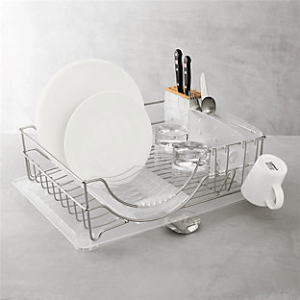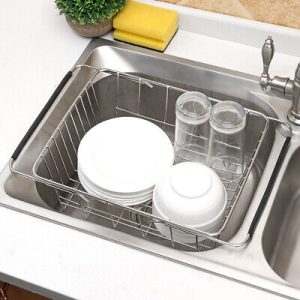Introduction:
Meet Jane Mitchell, a seasoned Home Economics professional with over two decades of experience in the field. She has dedicated her career to exploring the intricacies of home management and sharing her insights with enthusiasts like you. Today, Jane unveils advanced cleaning techniques for your dish drying mat, transforming it from a mundane kitchen accessory into a pristine and functional addition to your daily routine. Your dish drying mat is more than just a kitchen accessory; it’s a workhorse in your daily life. Whether it’s a microfiber pad or a silicone rack, understanding its type and material is crucial for effective cleaning. Microfiber mats are highly absorbent and versatile, often used for drying dishes and glassware. Silicone racks, on the other hand, provide excellent drainage and prevent the growth of mold. Recognizing the unique features of your dish drying mat is the first step toward efficient cleaning.
Regular Cleaning
Let’s be honest, the dish drying mat is often overlooked when it comes to regular cleaning. But it plays a significant role in maintaining the hygiene of your kitchen. Neglecting it can lead to a host of issues, such as the growth of bacteria, mold, and unpleasant odors. Jane Mitchell emphasizes the importance of a clean dish drying mat, not just for hygiene but also for the overall ambiance of your kitchen. An unclean mat can lead to cross-contamination, affecting the safety of your meals and the health of your family.

Essential Cleaning Tools
Mild Detergent: Choose a gentle, eco-friendly dish soap to avoid any residue or chemical odors on the mat.
Soft Brush: A soft-bristle brush, such as a toothbrush or a dedicated mat-cleaning brush, helps in thorough yet gentle scrubbing.
Microfiber Cloth: Use a microfiber cloth for drying and polishing your mat without leaving lint.
White Vinegar: A natural disinfectant, white vinegar helps in eliminating bacteria and odors.
Baking Soda: Ideal for stain removal and deodorizing, baking soda is a versatile cleaning agent.
Soft Towel: For blotting and drying the mat after cleaning.
Grease Stains: For grease stains, sprinkle cornstarch on the affected area, which will help absorb the grease. Then, use the baking soda paste to scrub.
Ink Stains: Dab the stained area with rubbing alcohol. Avoid scrubbing to prevent the ink from spreading. Rinse with warm water.

Freshness and Hygiene
Daily Maintenance: Shake off any excess water and debris daily. Hang or spread the mat to air it out and prevent mold growth.
Weekly Disinfection: Perform the vinegar disinfection mentioned earlier at least once a week to prevent bacterial growth.
Monthly Deep Clean: Once a month, deep clean the mat using the detailed process discussed earlier. This ensures that even hidden contaminants are removed.
KeyPoint:
| Cleaning Product | Features | Benefits | Recommended Use |
|---|---|---|---|
| Dish Soap | Mild, eco-friendly formula | – Gentle on mat material | Daily cleaning |
| Soft Brush | -Soft bristles for gentle scrubbing | – Effective stain removal | as needed for stain removal. |
| Microfiber Cloth | Lint-free and highly absorbent | – Quick drying and polishing | Drying and polishing. |
| White Vinegar | Natural Disinfectant | Eliminates Bacteria | Weekly disinfection. |
| Baking Soda | Versatile stain remover | Deodorizes and removes thought | Stain removal and deodorizing. |
| Soft Towel | – Gentle on mat material | – Effective for blotting and drying | Drying the mat after cleaning. |
| Rubbing Alcohol | – Effective for ink stain removal | – Quick-drying | for ink stain removal |
| Salt | – Absorbs wine and coffee stains | – Natural and readily available | for wine and coffee stain removal. |
| Cornstarch | – Absorbs grease stains | – Easy to apply | for grease stain removal. |
Conclusion:
In this comprehensive guide, we’ve explored the art of giving your dish drying mat a remarkable makeover. With the expert insights of Jane Mitchell, a seasoned Home Economics professional, you’ve gained access to advanced cleaning techniques that will transform your mat from a humble kitchen accessory into a vital, pristine part of your daily routine. Understanding your dish drying mat’s type and material is the first step toward effective cleaning. Whether it’s a microfiber pad or a silicone rack, recognizing its unique features is crucial for its maintenance. Neglecting regular cleaning can lead to issues like bacterial growth, mold, and unpleasant odors, making Jane’s emphasis on the importance of cleanliness even more essential.




